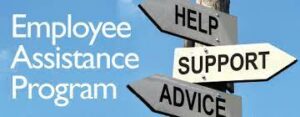Contents
- 1 Managing Employee Assistance Programs
- 2 What is an Employee Assistance Program (EAP)?
- 3 Why Do You Need An EAP For Your Business?
- 4 Who Should Be Involved In The Process Of Developing An EAP?
- 5 How To Manage Employee Assistance Programs?
- 6 Challenges Faced By Companies Managing Employee Assistance Programs
- 7 How to implement an EAP at your company or organization?
- 8 Tips On Managing Employee Assistance Program For HR professionals
- 9 A Word From Mantra care
Managing Employee Assistance Programs

It is important to maintain an open environment for employees when it comes to emotional or mental issues. Employee assistance programs are the perfect way to do so. It’s also beneficial when managers can lend advice on how best to handle conflicts when they know the employees’ concerns. When employers learn about when an employee may be in need of care, they can provide help and resources that can be effective. Managing employee assistance programs to take care of your employees is easy if done consistently.
Employee assistance programs help employees who need assistance with issues they may be struggling with. It’s important for managers to recognize when their employees may struggle and offer advice on how, as an employer, they can best provide care.
What is an Employee Assistance Program (EAP)?
An Employee Assistance Program (EAP) is a service that provides employees with counseling and other types of support for personal and emotional problems, enabling them to return to work more quickly. It may provide counseling for substance abuse, gambling/gamophobia, anxiety, depression, stress management, coping skills, career development, or life transitions.
EAP counselors may also be external specialists who work with an organization’s employees to address the serious mental health needs that may arise from traumatic events in their personal lives.
Employee Assistance Programs can help employees feel better about their situation when they have a problem that needs addressing. An EAP offers confidentiality throughout the process which will help make employees feel more comfortable during these tough times. There are plenty of benefits to implementing an EAP at any company or organization.
Why Do You Need An EAP For Your Business?

Employee assistance programs are a valuable tool for employers. Accessible help is available 24 hours a day, seven days a week, 365 days a year. An EAP can be especially helpful for employees experiencing difficult emotional issues, such as marital problems or substance abuse that could potentially have an impact on their job performance. If the organization decides that it wants to implement an employee assistance program. Then managers should be responsible for suggesting potential solutions to increase productivity and help make everyone more comfortable at work.
Who Should Be Involved In The Process Of Developing An EAP?
The development of an EAP within a company can be done by many people, depending on who has resources and information available to make it work. If there is someone who is responsible for employee well-being at your organization or company. Then they are typically responsible for getting things started. Human resources should also be involved so they can contact the organization’s employee health insurance provider to find out more about which services are available. And how much of a company contribution is necessary for each of the different types types of EAPs.
How To Manage Employee Assistance Programs?
Employee assistance programs can be an effective way for companies to handle common problems. This could lead to absenteeism and other costly employee behavior. They also help build a culture of preventing employees from abusing their time off.
Get Your Company To Understand The Importance Of EAPs
The first step in managing an employee assistance program is getting your company to understand the importance of such programs and allowing them to be administered by medical professionals rather than HR.
Maintain Confidentiality

When EAPs are run by HR, the results are inferior to when they are administered by medical professionals. The next step in managing an employee assistance program is ensuring that there are confidentiality rules to protect both the employees’ privacy and your company’s legal interests. During troubled times, it can be easy for someone who is not involved with an employee’s problems to want to sweep in and solve them. This can be a terrible idea, since the employee may have issues that are best kept private at work. On the other hand, managers need access to information about an employee’s behavior so that they can put plans in place to help reduce its negative effects on company goals.
Provide The Help From Professional
 The third step is managing your employee assistance programs properly. Identify a group of mental health professionals who have experience in helping employees with the issues that most often affect them. Ask for recommendations from other organizations and create a list of referrals to be used when necessary. Ensure that the confidentiality rules are the same as those given by your organization’s legal counsel. And add on any extra conditions that might be necessary.
The third step is managing your employee assistance programs properly. Identify a group of mental health professionals who have experience in helping employees with the issues that most often affect them. Ask for recommendations from other organizations and create a list of referrals to be used when necessary. Ensure that the confidentiality rules are the same as those given by your organization’s legal counsel. And add on any extra conditions that might be necessary.
Ensure that you aren’t just creating a list of names and telephone numbers. But also providing employees with information as to what services they will receive under the program. This can range from substance abuse treatment programs to suicide prevention helplines and hotlines for victims of domestic violence or sexual assault. You should rely on your medical professionals to help you understand what options are available and how best to reach your employees.
Keep Open-Communication
 Having open communication between employers and employees is also beneficial. Especially when it comes to the emotional and mental well-being of employees. Providing a space where employees can be open about what they are going through is important in maintaining an open environment, especially when managers have been provided with resources to handle any conflicts or issues that may arise.
Having open communication between employers and employees is also beneficial. Especially when it comes to the emotional and mental well-being of employees. Providing a space where employees can be open about what they are going through is important in maintaining an open environment, especially when managers have been provided with resources to handle any conflicts or issues that may arise.
Setting up an employee assistance program can be complicated, but by following these steps you can manage these programs properly and ensure that they reach their full potential of helping your company save money and maintain a healthy, safe working environment.
Facts About EAPs Programs
1. EAPs are usually administered by medical professionals, not HR staff
2. Ensure that employee assistance programs have confidentiality rules that are consistent with your company’s legal counsel
3. Set up an employee assistance program properly by relying on medical professionals to understand available options and how best to reach employees
4. Keep in mind the potential positive effects of EAPs on absenteeism and drug, alcohol, and mental health issues.
Challenges Faced By Companies Managing Employee Assistance Programs
Challenges faced by companies managing employee assistance programs-
1. Getting employees to truly understand the importance of employee assistance programs
2. Ensuring confidentiality rules are followed by both employees and managers
3. Properly managing EAPs with the help of medical professionals instead of HR staff
4. Knowing how best to reach your employees under an EAP
5. Identifying medical professionals who can appropriately handle the kinds of issues that affect employees
6. Getting companies to recognize how beneficial EAPs can be
7. Creating a list of resources for employees who may need help but do not feel comfortable talking to their managers
8. Helping employees deal with problems before they reach crisis levels- addressing mental health issues early helps save money
9. Helping employees to cope with the aftermath of something like domestic violence or sexual assault. So that it does not damage their productivity levels at work
How to implement an EAP at your company or organization?

Implementing an EAP program is not tough. However, implementing a successful program requires some strategy. Here are the best tips for implementing a great EAP program at your workplace-
Assess The Needs Of Your Employees
The first step is to assess the needs of your employees. What are their work-related stressors? What are they struggling with within their personal lives that may be affecting them on the job?
Set A Budget
Once you have a better understanding of what’s going on. It’s time to find out how much it will cost and who should pay for it. If you’re not sure where to start, there are plenty of resources available online that can help guide you through this process. You’ll also want to consider whether or not your current health insurance plan already includes mental health coverage. If that’s the case, then you just need to find a vendor who can provide EAP services.
If you’re unsure whether or not your current health insurance plan already includes mental health coverage. Talk to your benefits manager or contact your insurance provider directly. You should also check out our page on EAPs and other resources. Usually for more information on how to incorporate an EAP into your insurance benefits package.
Design The Program
Once you have a budget and vendor, it’s time to develop a program design that will meet your employees’ needs. It should be flexible enough to cover the full range of issues they might face, from substance abuse problems and family conflict to financial difficulties or depression. You’ll want to consider whether or not your employees need referrals to other organizations, such as legal aid offices and treatment centers. It should also include scheduling options so employees can take advantage of short-term counseling while continuing to work.
It should also include scheduling options so employees can take advantage of short-term counseling while continuing to work.
Get Everyone Onboard
Once you’ve designed the program with your vendor, it’s time to get everyone on board. You’ll want to have open discussions about your plans for the program with employees and managers. So no one feels uncomfortable or left out.
A dialogue with all staff members is very important in creating buy-in around the EAP program. It will also be key in helping employees understand how they can access the program. Once you’ve implemented your EAP, it’s important to make sure you have a sustainable program in place. This means creating programs for ongoing awareness and education that employees will actually want to participate in. When necessary, consider adding preventive measures such as stress management or other health and wellness initiatives to help build a healthier workplace overall.
Tips On Managing Employee Assistance Program For HR professionals

Tips on what HR professionals can do to manage employee assistance program:
Educate and inform: Inform managers about the importance of mental health and best practices for managing employees who are struggling with mental health concerns or stress.
Support your managers: Ensure your managers know how to identify signs of mental illness at work and what resources there are for help such as EAPs, counseling, and other organizations.
Design a program: Work with an EAP provider to design a program that provides ongoing support and guidance including workplace wellbeing initiatives such as mindfulness, stress management, and others that will support the company’s overall wellness goals.
Implement the program: Communicate to employees how they can access EAPs, what their role is in referring co-workers, and how confidentiality will be handled.
Monitor the program’s effectiveness: Monitor referral data to assess whether your efforts are successful and consider making changes as needed over time.
Make the program sustainable: Evaluate your EAP and consider whether you need to make changes or implement new initiatives to make the program sustainable.
Address confidentiality: Ensure your managers understand the importance of maintaining employees’ confidentiality and how they should approach this during supervision meetings or with other staff members.
Implement policies: Implement policies that protect your organization’s interests, but also acknowledge when employees are struggling with mental health concerns so they don’t feel afraid to request help.
Make it part of your culture: Incorporate mental health first aid training into staff meetings, wellness days, or other events so that employees are more likely to do the same with their teams.
A Word From Mantra care
Do you want to keep your employees happy, healthy, and productive? Join our employee assistance program and get a healthier workplace.


